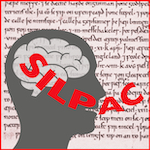P4: Structural priming and language change in experiments, historical corpora, and translation: Towards a psycholinguistically informed approach to historical corpus analysis, University of Mannheim
Team
- Gunnar Jacob (PI)
Description
The main goal of SILPAC is to investigate historical and contemporary language change from a psycholinguistic perspective, i.e. to bring together experimental psycholinguistics (P) and historical linguistics (H) to study the mechanisms underlying language change. However, an obvious obstacle for this interdisciplinary approach is that it is impossible to conduct psycholinguistic experiments with speakers from previous centuries. In more general terms, the types of empirical data typically used in experimental psycholinguistics and historical linguistics differ considerably between the two disciplines (see the methodological problem identified by Hundt et al., 2017, frame section 1). The aim of the present project is to overcome these methodological differences and to establish a link between experimental psycholinguistics and quantitative historical corpus analysis. We focus on particular phenomena which have been used in psycholinguistic experiments to gain insight into mechanisms of language processing, but can also be observed in corpus data.
A key assumption that guides SILPAC is that instances of language change can in principle also be elicited in synchronic experimental conditions (“change in the lab”, also see frame, key feature 1). In such experiments, participants are exposed to particular language input and subsequently have to produce language output themselves. If it turns out that particular experimentally manipulated input characteristics cause changes in the output produced by the participant, these input characteristics are also likely candidates for long-term change in diachrony (on the basis of new E-language). Within SILPAC, projects P1, P2, and P3 follow this approach by conducting psycholinguistic experiments on phenomena of language change previously identified in historical corpus analyses. In the present project proposal, we instead attempt to investigate phenomena from psycholinguistic experiments which are known to be informative with regard to underlying processing mechanisms (and also considered to play a role in language change) in historical corpus analyses. In other words, while we cannot conduct psycholinguistic experiments on, for example, speakers of Middle English (ME), it is potentially possible to simulate such experiments in a quantitative historical corpus analysis, which focuses on the same phenomena as experimental research.
A promising phenomenon to be investigated in both psycholinguistic experiments and (historical) corpus analyses is structural priming, i.e. the tendency of speakers to repeat structures previously encountered. Structural priming has been investigated extensively in psycholinguistic experiments and has provided valuable insights into a wide variety of issues of monolingual and bilingual language processing, production, and development. These studies led to the development of elaborate theoretical models (e.g. Hartsuiker et al., 2004; Jacob et al., 2016; van Gompel & Arai, 2017) which establish links between observable priming effects, structural representations, and mechanisms of syntactic processing.
The present proposal investigates the role of structural priming in two phenomena which have been extensively studied in historical linguistics, i.e. (a) frequency changes of the dative alternation in (ME) and (b) language change caused by Language Contact Through Translation (LCTT). To study a), we will apply Gries’ (2005) approach, to study b) we will apply comparable and parallel corpus designs as employed in translation research. We further intend to develop a methodological toolset that allows us to simulate structural priming experiments in corpus analyses, making it possible to investigate structural priming effects in historical data. In accordance with these aims, our research will be guided by the following three research questions:
-
RQ1 To what extent can the relative change in frequency which occurred for the dative alternation in Middle English be accounted for through within-structural priming?
-
RQ2 To what extent can variation in motion event descriptions in translated vs. non-translated Middle English texts be accounted for through cross-linguistic structural priming?
-
RQ3 Is it possible to simulate psycholinguistic experiments in a historical corpus analysis, and what methodological and statistical tools are required for this approach?
